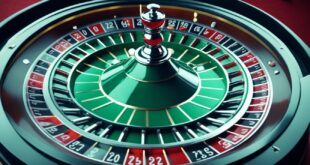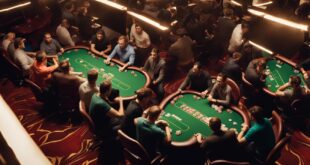Bluffing is a crucial strategy in poker that can turn the tables in a player’s favor. It involves deceiving opponents into believing you have a stronger hand than you actually do, creating doubt and leading them to make detrimental decisions. Mastering bluffing techniques requires a blend of psychological finesse and strategic thinking, allowing you to manipulate the game and take control of the pot.
Understanding the art of bluffing in poker is essential for players who want to enhance their poker strategy and gain an edge at the table. By mastering the deception, you can make calculated moves that leave your opponents trembling with uncertainty. Whether you’re a seasoned player looking to refine your bluffing skills or a beginner eager to learn the ropes, this article will provide valuable insights into the world of poker bluffing.
Key Takeaways:
- Bluffing is a vital strategy in poker that involves deceiving opponents about the strength of your hand.
- Mastering bluffing techniques can give you a significant advantage at the poker table.
- Bluffing requires a combination of psychological finesse and strategic thinking.
- Understanding the psychology of bluffing and the factors that influence bluffs is essential.
- Detecting bluffs in your opponents and pulling off successful bluffs yourself are crucial skills to develop.
The Value of Bluffing

Bluffing is not only a fundamental aspect of poker strategy but also a skill that can yield significant rewards. By employing this tactic, players have the opportunity to induce opponents to fold their strong hands, ultimately allowing the bluffer to claim the pot. The value of bluffing lies not only in the potential to win pots but also in the ability to manipulate opponents and shape the dynamics of the game.
Bluffing introduces an element of uncertainty and unpredictability, creating an atmosphere that keeps opponents off balance. By bluffing strategically, players can dictate the flow of the game, forcing opponents to make difficult decisions based on incomplete information. This psychological advantage allows the bluffer to gain control and steer the game towards a desired outcome.
However, it is important to note that bluffing also comes with inherent risks. A poorly executed bluff can result in substantial losses, as opponents may call the bluff and expose the bluffer’s weaker hand. Moreover, experienced players can detect signs of deception and exploit the bluffer, turning the tables and capitalizing on their vulnerability. Therefore, bluffing should be approached with careful consideration and adequate knowledge of opponents’ tendencies.
Bluffing is like a high-stakes game within the game, with its own set of rules and strategies. It requires finesse and the ability to mask one’s true intentions while maintaining a convincing facade. The rewards can be immense, but so can the potential pitfalls.
Players who successfully integrate bluffing into their poker repertoire can enjoy a range of benefits. Firstly, bluffing can lead to immediate financial gains by winning pots without having the best hand. Additionally, bluffing can have a long-term impact on a player’s table image. Exhibiting a well-timed and effective bluff can establish a reputation as an aggressive player, causing opponents to hesitate when facing future bets or raises, ultimately increasing the bluffer’s overall profitability.
Bluffing in poker is a calculated risk that, when executed intelligently, can provide significant advantages. It adds excitement and intrigue to the game, allowing players to exercise their strategic acumen and psychological prowess. However, mastering the art of bluffing requires a thorough understanding of opponents’ tendencies, a balanced approach, and an unwavering confidence. By leveraging bluffing as a weapon in their arsenal, players can elevate their poker game and maximize their potential for success.
The Psychology of Bluffing
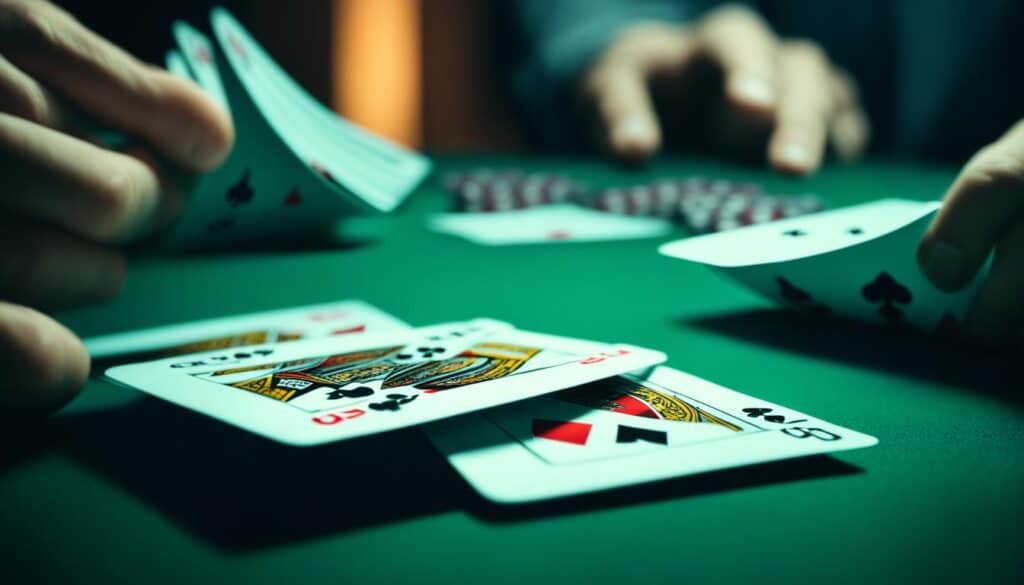
Bluffing in poker is not solely dependent on the strength of one’s hand. It also involves understanding the psychology behind it, including cognitive processes and emotional control. When players bluff, they project confidence, make quick decisions, and evaluate potential outcomes using cognitive processes.
Cognitive processes play a crucial role in bluffing as players assess their own hand and the possible reactions from opponents. They consider factors such as the likelihood of opponents having stronger hands or their propensity to fold under pressure.
In addition to cognitive processes, emotional processes are key to successful bluffing. Players must deceive their opponents while maintaining a confident demeanor. By controlling their emotions, bluffing becomes more convincing and less likely to be detected.
Understanding the psychology of bluffing gives players an advantage at the poker table. It allows them to analyze their opponents’ behavior, make strategic decisions, and adapt their bluffing techniques accordingly. By mastering the cognitive and emotional processes involved, players can become more effective bluffers and improve their overall game.
What Influences a Bluff
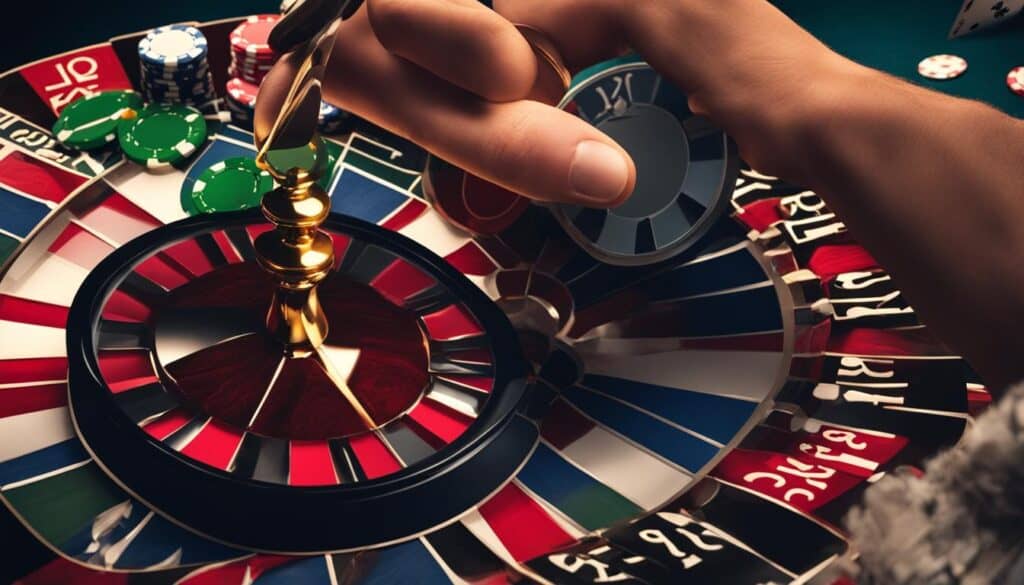
Bluffing behavior in poker can be influenced by various factors. One significant factor is individual differences, such as risk-taking tendencies and experience. Players who are more inclined to take risks may be more likely to bluff confidently, while those with less experience may use bluffing as a way to compensate for their weaker hands.
Another factor that can influence bluffing behavior is social and cultural factors. For example, gender can play a role in how bluffing is perceived. Cultural norms and expectations may shape the way individuals approach bluffing, with some cultures valuing deception more than others.
The game context, whether casual or high-stakes, also has an impact on bluffing behavior. In a casual setting, players may use bluffing more frequently as a way to spice up the game and create excitement. However, in high-stakes games, players may be more cautious with their bluffing strategies, as the potential risks and rewards are much higher.
Understanding these factors that influence bluffing behavior can help players adapt their strategies and enhance their overall bluffing techniques.
How Does Bluffing Affect the Game and the Players

Bluffing in poker has a profound impact on the game dynamics and the players involved. When executed successfully, a well-timed bluff can completely change the course of the game, forcing opponents to become more cautious in their decision-making. It introduces an element of uncertainty and unpredictability, keeping players on their toes and challenging their ability to read their opponents accurately.
Bluffing also has a psychological impact on opponents, leading to emotional reactions that can influence their future actions. The act of bluffing can evoke a range of emotions, such as doubt, confusion, frustration, or fear, affecting opponents’ rational thinking process. By creating doubt in their minds, bluffing can disrupt opponents’ strategies and force them into making mistakes.
Bluffing is like a psychological game within the game of poker. It tests your ability to control your emotions, read your opponents, and make calculated risks. It’s a fascinating aspect that adds layers of complexity and excitement to the game. – Mike McDonald
However, it is crucial for players to use bluffing with caution. Bluffing should be strategically employed, taking into consideration the risks and rewards involved. A poorly executed bluff can backfire, leading to substantial losses and negatively impacting a player’s overall game. Understanding the balance between bluffing and playing a strong hand is vital for success at the poker table.
How to Know if Your Opponent is Bluffing
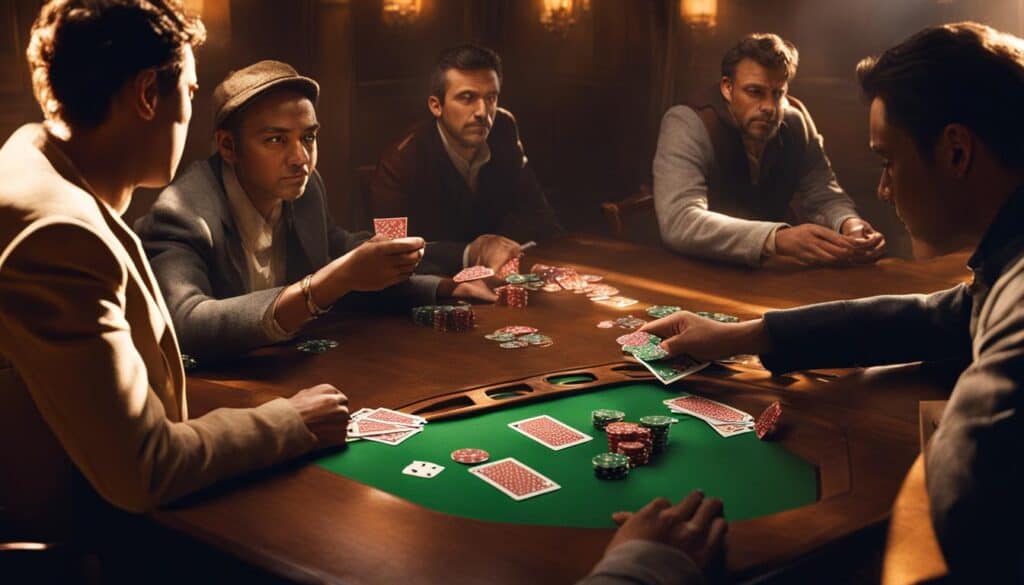
Detecting a bluff in poker requires keen observation and intuition. It’s essential to pay attention to your opponents’ body language and betting patterns to uncover their deceptive tactics. By reading opponents’ body language, such as identifying nervous tics or avoiding eye contact, you can gain valuable insights into their true intentions.
Observing betting patterns is another effective way to detect a bluff. Look for inconsistencies or unusual behavior in the way your opponents bet. Sudden changes in bet sizing or erratic patterns can be indicative of a bluff. By carefully analyzing these cues, you can make more informed decisions during gameplay.
Context and emotional cues also play a significant role in identifying a bluff. Consider the overall context of the game, including your opponents’ playing styles and the current state of the hand. Sometimes, emotional cues such as excessive confidence or hesitation can provide clues about an opponent’s bluffing intentions.
However, it’s important to note that detecting a bluff is not always easy, as skilled players can conceal their intentions masterfully. It requires a combination of experience, observation, and intuition. By honing your skills in detecting bluffs, you can gain a competitive edge and make more strategic decisions at the poker table.
How to Pull Off a Successful Poker Bluff

Pulling off a successful poker bluff requires strategy and skill. It’s not just about having a weak hand and hoping for the best.
Choosing the right moment to bluff is crucial. Timing is everything in poker, and it’s important to wait for the perfect opportunity to strike. This could be when you have a good read on your opponents or when the pot is large enough to make the risk worthwhile.
Establishing a tight image at the table can increase the success of your bluff. By playing solid hands and making fewer erratic moves, you’ll give your opponents the impression that you only play strong hands. This can make them more likely to fold when you do decide to bluff.
Understanding your opponents’ tendencies is also key. Take the time to observe their playing style and betting patterns. This information can help you tailor your bluffing strategy to maximize your chances of success.
Making a convincing bet is essential when bluffing. Your bet should be consistent with the story you’re trying to tell. It should make your opponents believe that you have a strong hand and discourage them from challenging you.
Staying calm and confident throughout the bluff is crucial. Any signs of nervousness or hesitation can give away the strength of your hand. Remember to maintain a strong poker face and avoid giving any hints about your true intentions.
However, it’s important not to overuse bluffing. Bluffing should be used strategically and sparingly to maintain its effectiveness. Adaptability is also key – be prepared to adjust your strategy based on the dynamics of the game and the reactions of your opponents.
Mastering the art of the successful poker bluff takes time and practice. By choosing the right moment, staying calm and confident, and understanding your opponents, you can become a formidable bluffing force at the poker table.
Capitol Casino: Your Destination for Mastering the Art of Bluffing in Poker

Looking to sharpen your poker skills and become a master of the bluff? Look no further than Capitol Casino, where the art of bluffing is celebrated and perfected. With a focus on strategy, psychology, and intuition, Capitol Casino offers an ideal platform for poker players to enhance their bluffing skills and elevate their overall game.
At Capitol Casino, we understand that bluffing is not just about having a strong hand—it’s about outsmarting your opponents and controlling the game. Our experienced staff and welcoming environment provide the perfect setting for players to learn and practice strategic deception. Whether you’re a beginner looking to learn the basics or an experienced player aiming to refine your skills, Capitol Casino is the place to be.
Through our diverse range of poker games and tournaments, you’ll have ample opportunities to test and refine your bluffing techniques. Engage with fellow players, observe their strategies, and adapt your game accordingly. Our friendly and knowledgeable staff are always on hand to offer guidance and insights, helping you master the art of bluffing in poker.
Join us at Capitol Casino and unlock your full potential as a poker player. With our emphasis on mastering bluffing, you’ll gain the confidence and skills needed to bluff your way to success at the table.
Discover the thrill of calculated deception and the excitement of strategic gameplay at Capitol Casino. Don’t let bluffing be a mystery—let us help you develop your poker skills, enhance your intuition, and become a formidable force at the table. Visit Capitol Casino today and take your bluffing abilities to new heights.
Unlocking the Secrets of the Bluff: Mastering the Art of Deception in Poker for Unparalleled Success at the Table

Mastering the art of bluffing in poker is a skill that goes beyond chance and luck. It requires a deep understanding of the game, strategic thinking, and the ability to deceive opponents with finesse. Unlocking the secrets of the bluff is the key to unparalleled success at the poker table.
Bluffing, in its essence, is the act of making opponents believe that you have a stronger hand than you actually do. It is a calculated deception that can lead to sizable victories. To harness the power of bluffing, players must develop their bluffing skills through practice and study.
One vital aspect to unlocking the secrets of the bluff is understanding opponent tells. Opponent tells are subtle cues that can indicate the strength or weakness of their hands. By keenly observing opponents’ behavior, body language, and betting patterns, skilled players can gain valuable insights and make informed decisions.
Calculating pot odds is another vital skill for successful bluffing. Pot odds involve analyzing the potential reward of winning the pot against the chances of winning the hand. Knowing when to bluff and when to fold based on these calculations is integral to long-term poker success.
Adaptability is also crucial in the art of bluffing. Experienced players understand that bluffing strategies need to be adjusted depending on the game context, the opponents, and the specific circumstances of each hand. Flexibility allows players to stay one step ahead and maximize their chances of success.
By mastering the art of deception in poker, players can increase their chances of winning big at the table. Expert tactics, coupled with consistent practice and experience, can transform players into skilled bluffing professionals who hold a significant advantage over their opponents.
Bluffing is not just about the cards you hold; it’s about the story you tell. It’s the fine art of convincing your opponents that your hand is unbeatable, and that’s where the true beauty of the bluff lies. – Expert Poker Player
Understanding the Basics of Bluffing

Bluffing in poker is a strategic technique that involves deception and understanding opponent behavior. To become a proficient bluffer, it is essential to grasp the fundamentals of bluffing and develop the necessary skills to execute it effectively.
Bluffing begins with evaluating your own hand and considering its strength in relation to the board and your opponents’ likely holdings. This cognitive process allows you to identify opportunities where a bluff could be successful.
Successful bluffing depends on making quick and calculated decisions. It requires a strategic approach that takes into account various factors, such as reading opponents’ tendencies, observing their betting patterns, and analyzing the overall game dynamics.
Bluffing also entails an element of risk-taking. Knowing when to take calculated risks and when to back down plays a crucial role in bluffing strategy. Good judgment and risk assessment skills are essential in determining the optimal moments to execute a bluff.
Emotional control is another significant aspect of bluffing. During a bluff, it is essential to maintain confidence and control over your emotions. This can help project a convincing image of strength and increase the chances of a successful bluff.
Mastering the basics of bluffing is pivotal for any poker player aiming to become skilled in this art. It requires a combination of strategic thinking, observation skills, and an understanding of opponents’ cognitive and emotional processes. By developing these key abilities, players can enhance their bluffing capabilities and gain an edge at the poker table.
Identifying Your Opponents’ Tells
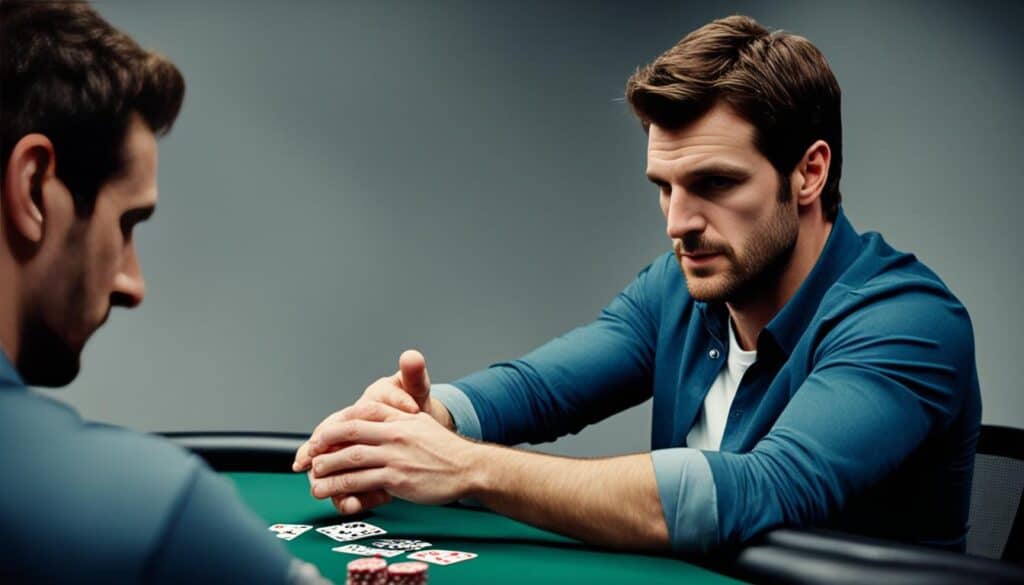
When it comes to poker bluffing, one of the essential skills is the ability to identify your opponents’ tells. These tells can provide valuable insights into their bluffing behavior and potential hand strength. By effectively observing their physical and verbal cues, you can gain a significant advantage at the poker table.
Physical Cues
Observing your opponents’ body language can reveal subtle physical cues that indicate their intentions or the strength of their hand. Pay attention to their eye movements, as avoiding eye contact or darting eyes may be a sign of nervousness or a bluff. Additionally, changes in posture or fidgeting with chips may indicate discomfort or uncertainty. A keen eye for these physical cues can help you make informed decisions when assessing opponents’ bluffing behavior.
Verbal Cues
Verbal cues can also provide valuable information about your opponents’ bluffing tendencies. Certain statements, such as an exaggerated claim of a strong hand, can be a bluffing tactic to manipulate the perception of their cards. Sudden changes in tone or hesitation in their speech during key moments can also be indicative of a bluff. Paying attention to these verbal cues can help you gauge the credibility of your opponents’ actions and make better-informed decisions.
By honing your observation skills and being attentive to opponents’ physical and verbal cues, you can gain valuable insights into their bluffing behavior and hand strength. Remember, mastering the art of identifying opponents’ tells takes practice and experience. Combined with a solid understanding of poker strategy, this skill allows you to make more accurate assessments and take calculated risks to maximize your chances of success at the poker table.
Developing Your Bluffing Strategy
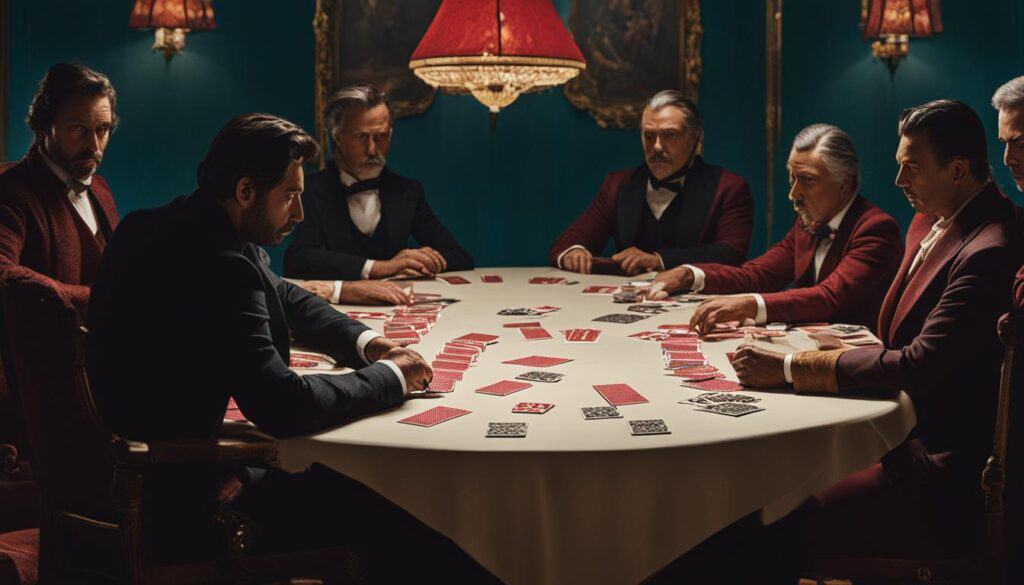
To become a successful bluffer in poker, it’s essential to develop a well-thought-out strategy that takes into account your opponents’ tendencies and behaviors. Understanding how your opponents play is crucial in determining when to execute a bluff effectively.
Choosing the right moment to bluff can make all the difference in the success of your strategy. Look for opportunities when your opponents show signs of weakness or uncertainty. This could be when they hesitate before making a bet or show a lack of confidence in their actions.
Analysing your opponents’ betting patterns is another valuable tool for developing your bluffing strategy. Pay attention to how they bet in different situations and adjust your bluffing tactic accordingly. If you notice that an opponent tends to fold easily, it may be a good time to bluff. On the other hand, if an opponent is more likely to call or raise, you might want to reconsider executing a bluff.
Remember, it’s important to start small when implementing your bluffing tactics. Gradually escalate your bluffing maneuvers as you gain confidence and a better understanding of your opponents’ poker styles. Maintaining a cool and confident demeanor throughout the bluff is essential to convince your opponents of the strength of your hand.
Calculating the Pot Odds
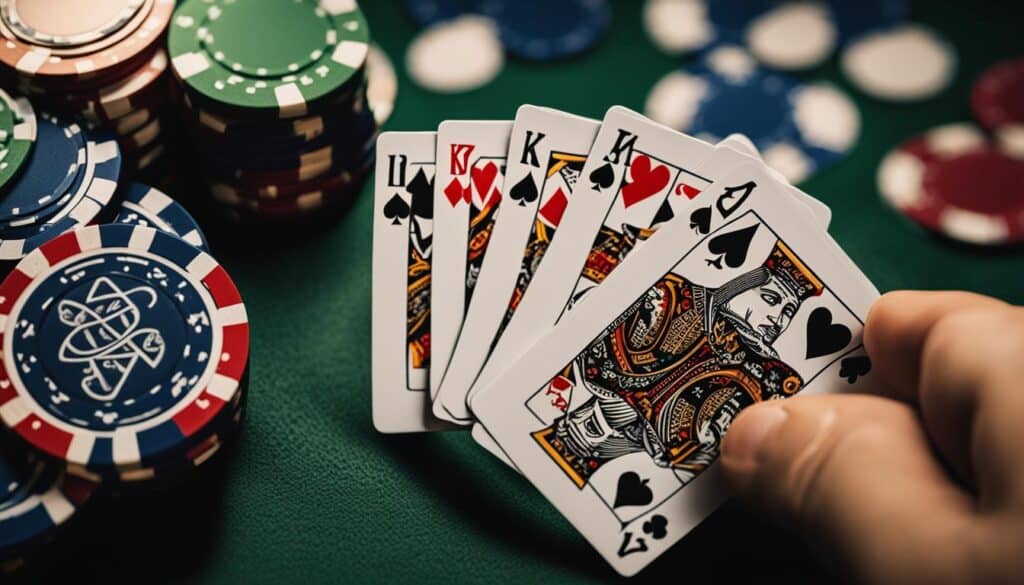
Mastering the art of bluffing in poker requires more than just intuition and psychological finesse. It also involves making informed decisions based on calculated risks and rewards. One crucial aspect of decision-making in bluffing is calculating the pot odds.
Pot odds refer to the ratio between the current bet size and the potential reward compared to the chances of winning the hand. By considering the pot odds, players can assess the risk involved in bluffing and determine whether it is a strategic move.
Calculating pot odds requires a combination of analytical thinking and the ability to assess probabilities accurately. It involves evaluating the current pot size, the size of the bet or raise, and the likelihood of winning the hand with the available cards.
To calculate the pot odds, divide the current bet or raise by the total pot size (including the bets already made). Then, compare this ratio to the chances of winning the hand. If the potential reward outweighs the risk, it may be a favorable situation to bluff.
Mastering pot odds is crucial for making informed decisions about when to bluff in poker. By carefully assessing the risk and potential reward, players can maximize their chances of success and avoid unnecessary losses.
Remember, calculating pot odds is just one aspect of the decision-making process in bluffing. It should be used in conjunction with other factors such as opponent analysis, game dynamics, and the overall strategy. Making strategic choices based on pot odds can significantly improve a player’s bluffing skills and increase their chances of winning at the poker table.
Reading Your Opponents’ Bluffs

When playing poker, one of the most valuable skills a player can possess is the ability to read their opponents’ bluffs. This skill requires keen observation and the ability to recognize deception. By carefully observing their behavior, betting patterns, and physical cues, you can gain valuable insights into whether or not your opponents are bluffing.
One essential aspect of reading opponents’ bluffs is paying attention to changes in their aggression level. If an opponent suddenly becomes more aggressive or starts making large bets, it may be a sign that they are trying to intimidate you into folding. On the other hand, a sudden decrease in aggression may indicate that they have a weak hand and are trying to lure you into betting more.
Another important factor to consider is timing. If an opponent hesitates before making a bet or takes longer than usual to act, it could be a sign that they are unsure about their hand and are considering bluffing. Additionally, observing their demeanor can provide valuable clues. Nervousness, such as fidgeting or avoiding eye contact, may suggest that they are bluffing and trying to hide their true intentions.
Remember, reading opponents’ bluffs requires careful observation, attention to detail, and the ability to interpret their behavior. It’s a skill that can be developed and honed with practice and experience. By mastering the art of reading opponents’ bluffs, you can gain a significant advantage at the poker table and improve your chances of success.
The Value of Slow-Playing
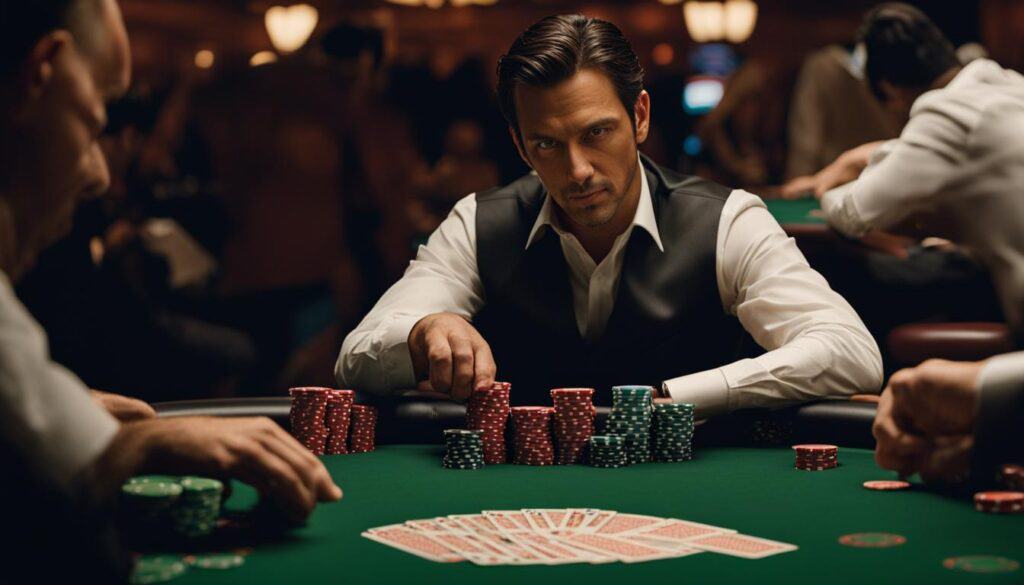
Slow-playing is a strategic deception technique used in poker, aimed at maximizing profits by deceiving opponents through under-betting or not raising with strong hands. By appearing weak, players entice their opponents to stay in the hand, leading to larger pots and potentially higher winnings.
To effectively employ slow-playing, players must carefully choose the right moments to under-bet or refrain from raising. Understanding opponent tendencies is crucial in identifying when slow-playing can be most advantageous. By luring opponents into a false sense of security, players can maintain control of the game while steadily building the pot.
However, it is important to exercise caution when using slow-playing. The technique should be employed strategically and not overused, as opponents can become wise to the deception over time. To maximize its effectiveness, slow-playing should be integrated into an overall game plan that involves a mix of different strategies and approaches.
Mastering the art of slow-playing requires practice, observation, and adaptability. Players must continuously analyze game situations, consider opponent behavior, and make calculated decisions to effectively utilize this strategic deception technique. With the right application, slow-playing can be a powerful tool for maximizing profits and gaining an edge at the poker table.
The Importance of Practice and Caution
Mastering the art of bluffing in poker requires a combination of skill and strategy. To become proficient at bluffing, players must dedicate time and effort to practice and continuous improvement. Regular practice allows players to refine their bluffing techniques and develop a deeper understanding of the game.
Observation is also crucial in developing bluffing skills. By carefully observing opponents’ reactions and betting patterns, players can gain insights into their strategies and adjust their own tactics accordingly. This skill development requires patience and a keen eye for detail.
While practice is important, caution is equally critical. It is essential to exercise caution and avoid underestimating opponents. Even the most skilled bluffers can fall victim to well-executed counter-bluffs. Players should maintain a balanced approach and be aware of the risks involved in bluffing. Practicing at low-stakes tables allows players to hone their bluffing skills while minimizing potential losses.
By combining practice and caution, players can master the art of bluffing in poker. Skill development through practice and a cautious mindset can help players make informed decisions, adapt to changing game situations, and ultimately increase their chances of success at the poker table.
FAQ
What is bluffing in poker?
Bluffing in poker is a strategy where players deceive their opponents into thinking they have a stronger hand than they actually do.
What is the value of bluffing in poker?
Bluffing in poker can lead opponents to fold strong hands, allowing the bluffer to win the pot and control the flow of the game.
What are the psychological aspects of bluffing in poker?
Bluffing in poker involves a combination of cognitive processes, emotional control, and projecting confidence to deceive opponents.
What factors influence bluffing in poker?
Individual differences, social and cultural factors, and the game context can all influence a player’s decision to bluff in poker.
How does bluffing affect the game and the players?
Bluffing can change the course of the game, make opponents more cautious, and have a psychological impact on opponents’ decision-making.
How can I tell if my opponent is bluffing in poker?
Pay attention to opponents’ body language, betting patterns, and emotional cues to try and identify if they are bluffing.
How can I pull off a successful poker bluff?
Choose the right moment to bluff, establish a tight image, make a convincing bet, and maintain a calm and confident demeanor.
What does Capitol Casino offer to help me master the art of bluffing in poker?
Capitol Casino provides a supportive environment for players to improve their bluffing skills and enhance their overall poker game.
How can I unlock the secrets of the bluff and become successful in poker?
By understanding the basics of bluffing, developing observation skills, and practicing gameplay, you can become a skilled bluffer and increase your chances of winning.
What are the fundamental aspects of bluffing in poker?
Bluffing basics involve understanding the definition and purpose of bluffing, cognitive and emotional processes, and opponent behavior analysis.
How can I identify my opponents’ tells in poker?
Paying attention to opponents’ body language, physical cues, and verbal cues can help identify their bluffing behavior.
How can I develop an effective bluffing strategy in poker?
Analyze opponent tendencies, choose the right moment to bluff, and adjust your strategy based on observation and game situations.
What are pot odds and how do they relate to bluffing in poker?
Pot odds involve calculating the risk and reward of bluffing by considering the bet size and the chances of winning the hand.
How can I read my opponents’ bluffs in poker?
By observing opponents’ behavior, betting patterns, and recognizing deception, you can improve your ability to read opponents’ bluffs.
What is slow-playing in poker and how can it be advantageous?
Slow-playing involves under-betting or not raising with strong hands to deceive opponents and maximize profits by keeping them in the hand longer.
Why is practice and caution important in bluffing?
Practicing bluffing techniques and exercising caution helps players refine their skills, avoid underestimating opponents, and maintain a balanced approach to bluffing in poker.
 Online Gaming Circuit
Online Gaming Circuit


